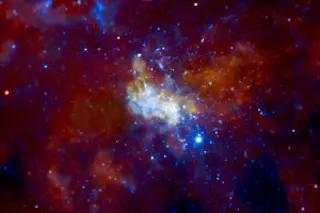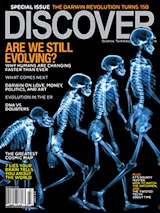The inventory of ingredients for life that have been observed in space is large and growing. Last November an international team of astronomers made perhaps the most significant such discovery to date: They found glycolaldehyde, a type of sugar, in a Milky Way stellar nursery 26,000 light-years away.
Glycolaldehyde is a key component in RNA, which may have driven the development of the first living cells on Earth. According to study author Serena Viti, an astrochemist at University College London, this is the first time that the molecule has been identified in a region of the galaxy that could be hospitable to life.
By looking for unique chemical signatures in light and radio signals gathered by telescopes, researchers have observed more than 140 molecules—including increasingly complex organic ones—surrounding stars or in interstellar space. Another RNA ingredient, propenal, was found in the Milky Way in 2004. Some astronomers have even reported ...















